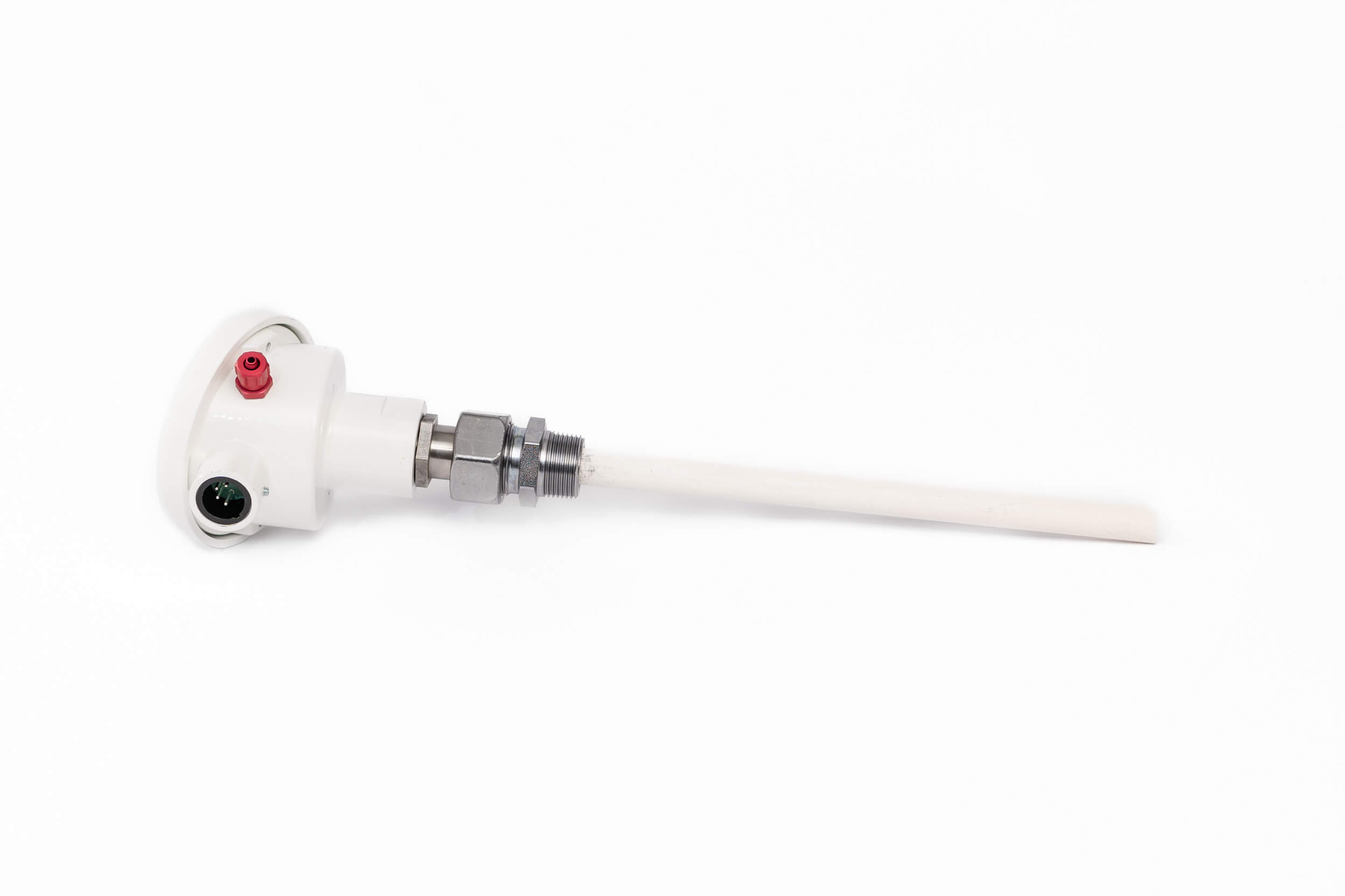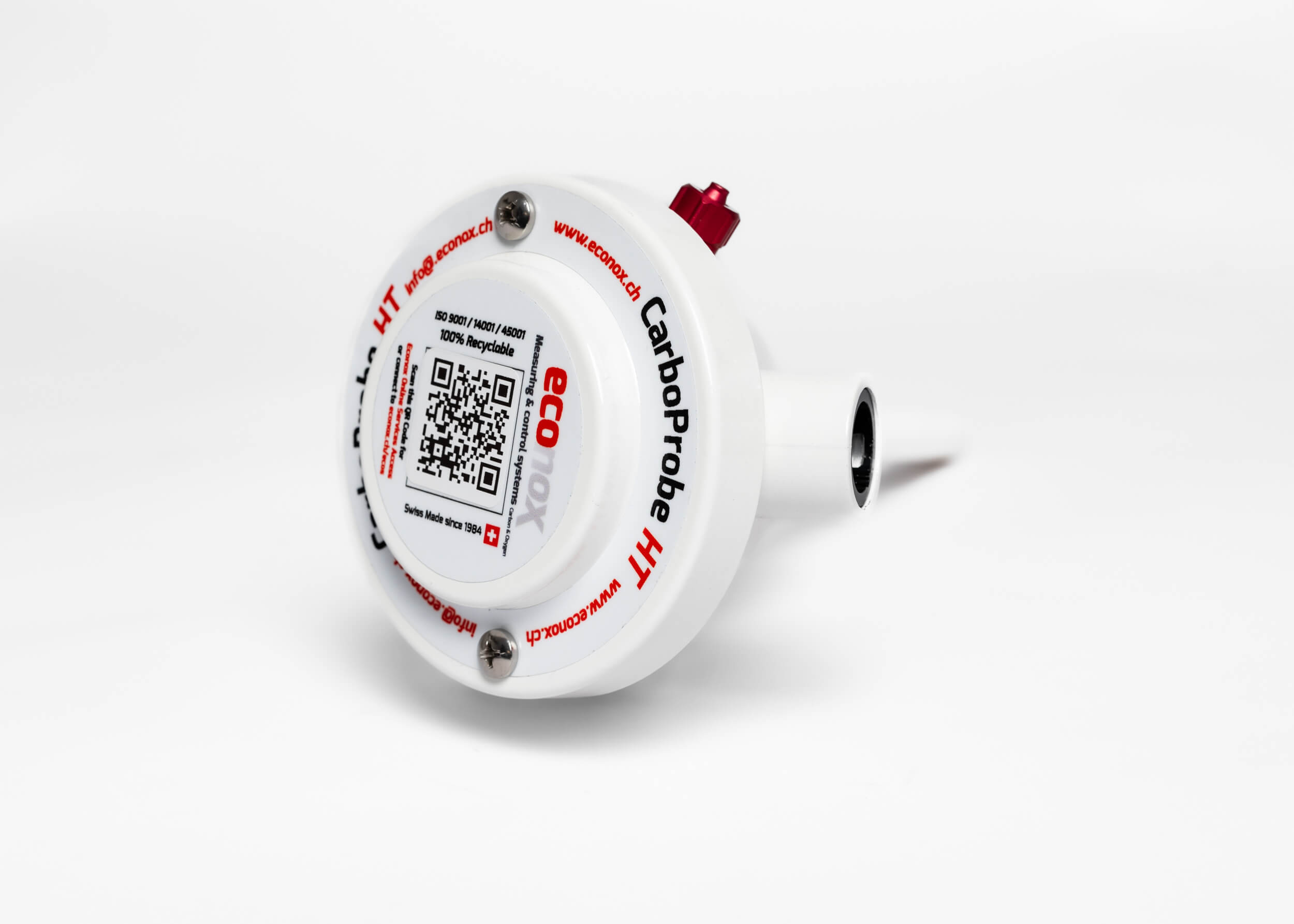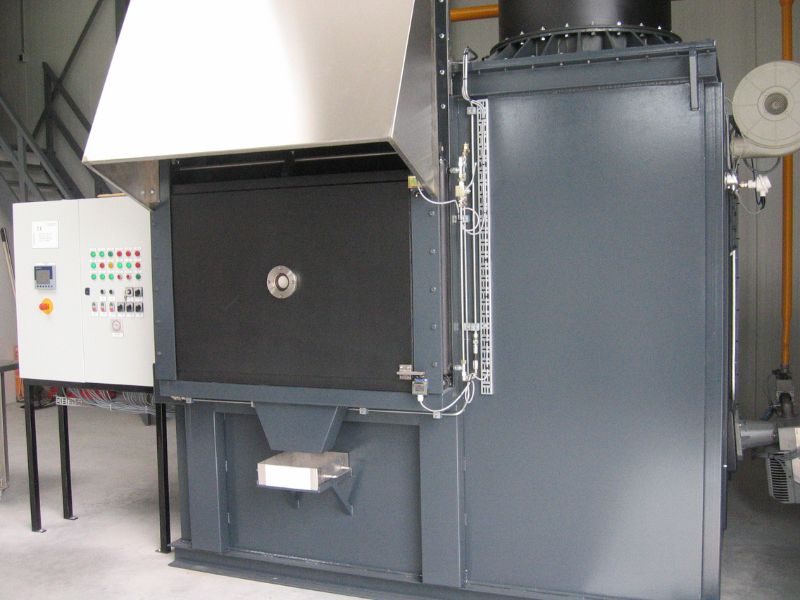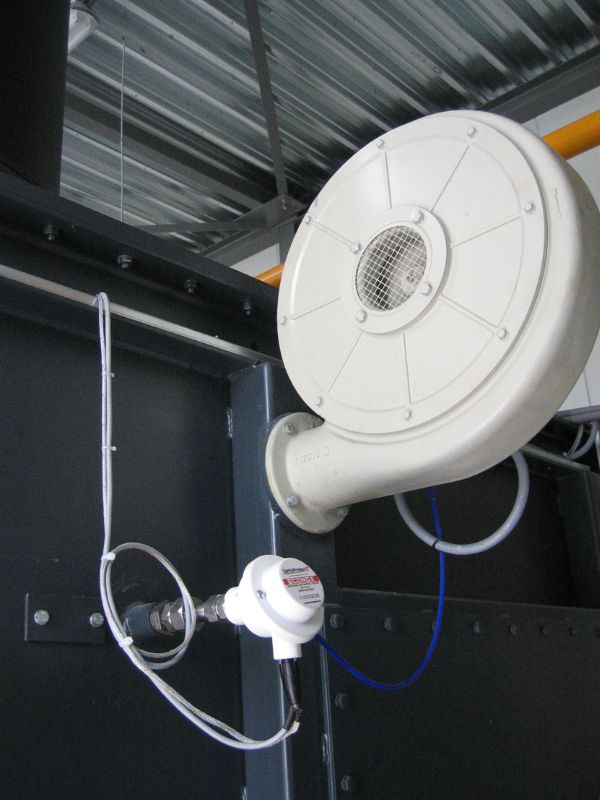 Use of zirconium oxide oxygen probes in the incineration industry
Use of zirconium oxide oxygen probes in the incineration industry
CarboProbe HT oxygen probe developed for incinerators
Zirconium oxide oxygen probes play a key role in the incineration industry, particularly for measuring the oxygen content (%O2) in flue gases. These advanced tools help ensure optimal combustion, guaranteeing safe, efficient operation that complies with environmental standards.
Operating principle
Oxygen probes work by measuring the oxygen content of combustion gases. They use a sample of clean, dry reference air injected into an internal reference chamber. This air is called “reference air”. This air flow guarantees a stable and constant basis for comparing the concentration of oxygen present in combustion gases.
Zirconium oxide, the probe’s main material, becomes an ion conductor at high temperatures (from 600°C). A difference in oxygen concentration between the reference air and the measured gases creates an electrical potential. This signal is then interpreted to determine the precise oxygen content (%O2). In the incineration industry, this level must generally be maintained between 46% and 10% to ensure efficient combustion and limit pollutant emissions.
Description of Econox CarboProbe HT probe
Carboprobe HT is a high-precision oxygen probe specially designed for high-temperature environments. Manufactured by Econox, it is ideal for industrial applications requiring reliable, continuous oxygen measurement under extreme conditions.
The Carboprobe HT probe embodies Econox’s commitment to Swiss excellence, offering solutions to the most complex industrial challenges.
Technical information
| MAIN FEATURES | |
| High temperature | Operates in environments from 600°C to 1700°C, perfect for the incineration industry, for example. |
| Robust material | Designed with robust components, including a zirconium oxide sensor, all electrodes are made of platinum for long life and optimum reliability. |
| Integrated thermocouple | Available with S or R types, for simultaneous measurement of temperature and oxygen percentage. |
| Industrial compatibility | Suitable for a wide range of industrial applications, wherever oxygen measurement is required. |
Advantages of using Econox probes
Econox oxygen probes are high-tech instruments, manufactured and tested in Switzerland to strict quality standards.
Precision and reliability:
Econox probes provide precise, real-time measurements of oxygen levels, ensuring optimum combustion.
Reducing emissions :
Good control of oxygen levels limits pollutant gas emissions, thus complying with environmental standards.
Simplified maintenance :
Their robustness minimizes the need for frequent servicing and reduces unscheduled downtime.
Installation and hot swapping :
Some Econox probes can be installed or hot-swapped without any special precautions, reducing downtime.
Compliance with standards :
They comply with strict industrial standards, guaranteeing safe and efficient operation.
Concrete example of use
In a meat waste incineration plant, Econox probes are used to continuously monitor oxygen levels in flue gases. Here’s how it works:
Initial phase
The incinerator is heated to a high operating temperature. The probe continuously measures oxygen levels to ensure that they remain within the optimum range of 6% to 10%.
During incineration
Sensors detect variations in oxygen levels and transmit this information to the control system, which automatically adjusts the air supply to maintain efficient combustion.
Result
Complete combustion is achieved, reducing residual waste and minimizing CO and fine particle emissions.
CarboProbe HT oxygen sensor: optimum results
Econox CarboProbe zirconium oxide oxygen probes bring essential precision and reliability to the incineration industry. Their ability to measure and control oxygen levels (in a temperature range from 600°C to 1700°C) guarantees optimum results in terms of energy efficiency and compliance with environmental standards.
These probes are a strategic investment for all companies seeking to optimize their combustion processes while reducing their environmental impact.











